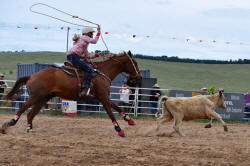Be prepared for Delta: what you need to know now

So, you've signed up to do a Delta course with a centre of your
choice (or, wisely, you are going to follow the Module One course on
this site and then follow the recommended study and writing route
for Module Three).
Now what?
Many centres will give you some pre-course reading and writing to do
and that usually has two purposes:
- To get you acquainted with the conventional style and presentation formats of Delta written work
- To start you on the road to some serious skills and systems analysis by reading some important texts
You will, of course, do as the centre requires and complete those tasks.
There is a sister guide to this one which considered not what you
have to know but what you will be asked to
do in terms of exercising cognitive powers.
If you would like to open that guide in a new tab,
click
here.
This guide is different because it seeks to acquaint you with the broad outlines of some key concepts that you will encounter on the course. That way, you will be able to recognise what it is that your tutors are talking about or that you are being asked to read about and set the ideas and issues in some kind of context.
We will cover the areas under four main headings:
- Learning
- Teaching
- Language
- Skills
and within each section, we'll give you links to other guides on
this site where you can find out more, sometimes much more.
It is not necessary to follow them unless your curiosity drives you
there but you may like to return later to do things in a bit more
depth.
 |
Learning |
It's unlikely that you encountered much on any course you have
taken before Delta (such as CELTA or the Trinity Cert. TESOL) about
learning theory and, unless you have been very conscientious, you
won't have encountered much since then.
However, it is arguable that unless we know something about
the possible ways people learn second or other languages, it is very
difficult to claim to be professional practitioners in the field and
even more difficult to design and deliver lessons in a principled
manner.
Unfortunately, nobody really knows how people learn although some
claim to know.
There are, however, some theories and hypotheses which are more or
less persuasive. They can't all be right and it is very
probable that they are all more or less wrong but it's the best we
can do for now.
We'll take the theories first and then turn the focus onto some of
the main hypotheses about language learning.
 |
Theory 1: Behaviourism
|
It was a chap called Skinner who famously pronounced that:
We have no reason to assume ... that verbal
behaviour differs in any fundamental respect from non-verbal
behaviour, or that any new principles must be invoked to account for
it.
BF Skinner, Verbal Behaviour, 1957
The theory contends that learning a language is the same as
learning any other behaviour. We do it by trial and error or
by practice and when we succeed the behaviour is reinforced and when
we fail that behaviour gets discarded.
For example, if you want to learn to ride a bicycle, the only sure
way to do it is to get on the bicycle and try. If you fall
off, you get back on and try something slightly different (how you
sit, how fast you go etc.) until you discover how to do it properly.
The theory behind this is that given the stimulus (the bicycle in
this case), you respond by getting on and trying to move it forwards
by pedalling. When you fall off and hurt yourself that
constitutes a sort of punishment but when you succeed in pedalling a
few meters, that constitutes a reward. Successful behaviour,
which is rewarded, is likely to be repeated. Unsuccessful
behaviour, which is not rewarded or is even punished, will not be
repeated.
So it is with language learning. When a learner says something
which is wrong, the teacher frowns or complains (punishment is not
usually considered appropriate) but when the learner says something
right and well-formed, the teacher praises and the learner receives
a warm glow of success.
Reinforcement is the important issue because from a behaviourist
point of view, the strength of the habit which is instilled is
directly related to the strength of the reinforcement that is
provided.
Enough repetitions of the stimulus → response → reinforcement
cycle will see the behaviour become habitual and carried out
unconsciously (just as an expert cyclist does not have to think
about the action of cycling).
 |
Theory 2: Cognitivism
|
In the same year that Skinner publish Verbal Behaviour, Noam Chomsky published Syntactic Structures in which he pronounced:
Language is not a habit structure.
Ordinary linguistic behaviour characteristically involves
innovation, formation of new sentences and patterns in accordance
with rules of great abstractness and intricacy.
Syntactic Structures (1957)
which is, of course, the opposite point of view. They cannot both be right.
Chomsky was not, in fact, particularly interested in how people
learn a foreign language. His concern was much more with how
people acquire their first language(s) and with discovering and
elucidating the rules of great
abstractness and intricacy and figuring out how they are
acquired at a very early age.
Following on from the criticisms of behaviourist theory a host of
other ideas have been proposed concerning just how people learn a
foreign language of which three are important hypotheses in the
field of English Language Teaching.
- Active construction of grammar rules
This hypothesis proposes that learners are actively constructing rules from the data they encounter so, for example, having noted that the plural of a noun in English is formed by adding -s or -es to the base form, will correctly produce cars, papers, tables, chairs and thousands of other forms until they bump into a noun like mouse when the rule breaks down. Then the learner has to amend the rule to take account of the exceptions and carry on. - Connectionism
This proposes not that people make rules but that they work on statistical probability and assume, therefore that because all the verbs they have so far encountered, ones spelled like ring, sing, sink and so on make a change to the vowel in the past tense producing rang, sang and sank other verbs will follow a similar pattern. Moreover, the learner has also encountered the past participles of these verbs as in rung, sung and sunk. Now, instead of applying a rule and making the past tense of fling and flinged, a learner may, on the basis of some statistical likelihood prefer to guess at flang, flung and, as we see, will be only half right. However, the important point is that people do not necessarily apply rules, they apply statistical reasoning. In other words learners do not ask:
Which rule should I apply here?
but:
What is the likelihood that this item will be correct, given the evidence I have?
The connect in connectionism refers to the hypothesis that people make new neural connections in their brains when they encounter new data and facts about the language they are learning and these connections are not to rules but to structures which are similar. - Social interactionism
This hypothesis seeks to explain how people learn the rules of appropriacy and style and the claim is that we learn language by interacting with others in meaningful contexts. In other words, we respond to the reactions of others and alter what we say and develop our sensitivity to what it is appropriate to say.
This theory of learning lies at the heart of communicative language teaching of which a little more later.
More on learning from these guides:
First- and second-language acquisition |
Second-language acquisition |
How learning happens |
Chomsky |
The in-service methodology index
 |
Teaching |
It is not surprising that the opposing theories of how people
learn have led to the development of opposing theories of how to
teach.
Just as there are two main theories concerning how people learn, so
there are two main approaches to how we should teach.
 |
Methodological approach 1: Audio-lingualism
|
Structural linguistics starts from an understanding of language as a hierarchical system of items: phonemes, morphemes, words, phrases, clauses, sentences. This, allied to a behaviourist understanding of learning, led to the development of audio-lingualism and some subcategories of it such as situational language teaching (a peculiarly British invention) audio-visual teaching and so on. There are two strands:
- The syllabus must be structurally ordered in terms of rising levels of difficulty from small units up to larger ones.
- Teaching consists mostly of hearing and repeating and repetition drills to make the language an automatic habit.
 |
Methodological approach 2: Functional / Communicative
approaches
|
These twin understandings underlie a wide range of classroom
approaches but what they all have in common is that language is seen
primarily as a way of making meaning so the focus is on the message,
not how accurately it is conveyed (providing it is comprehensible).
Allied to this understanding is a perception of the need to allow
learners to experiment with and use language for real (or simulated)
communication. The hypothesis is that learning will take place
in the struggle to communicate.
Communicative approaches are not without their critics.
Other hypotheses about effective classroom procedures and techniques which draw on one or both of these underlying theories about teaching include:
- Noticing: the gap and the language
- Inferring meaning: from reading and listening
- Deductive and inductive learning: in task design
- The Zone of Proximal Development and scaffolding learners' efforts
- Drilling
- Interlanguage and the role of error
and they can all be tracked down from the A-Z index on this site.
More on methodology from these guides:
The in-service methodology index |
Methodology refined |
The history and development of ELT |
Communicative Language Teaching
 |
Language |
Learning to analyse language in a way that keeps you a lot more than one step ahead of your learners is something that people on Delta courses find quite challenging. There are two ways to go about it but they can be combined (and usually are, wittingly or by accident).
 |
A structural approach
|
This involves focusing on a particular structure or relationship
between words and phrases and analysing the form first before
considering what functions the form may realise. So, for
example, one might take the so-called first- and second-conditional
structures and focus on issues of structure (how the tense forms and
so on work) and on the phonological features (such as the weakened
form of the word if in most spoken language) and so on.
Only later, in this kind of analysis will consideration be given to
what communicative significance the forms can carry (contingency,
threat, regret etc.).
It might also concern, for example, the consideration of the
multiple meanings of a verb such as could and the
structural issues which surround the use of central modal auxiliary
verbs.
 |
A functionalist approach
|
This involves a different starting point and that might be, for
example, how English expresses contingent events and one of the ways
is via the so-called conditional sentence structures but there are
many other ways including a range of conjunctions, nouns like,
dependency and provision, adverbials such as in
that case only, under no circumstances and so on.
In terms of modality, such an analysis might start from
considerations of expressions of truth, impossibility and likelihood
(epistemic modality) and then consider what structures at what
levels should be taught to help people express these meanings.
Those structures might include modal auxiliary or semi-auxiliary
verbs as well as a range of modal nouns, adjectives and adverbials.
More links to guides about language structure and meaning from these
in-service indexes:
The syntax index | The lexis index | The pronunciation index | The modality index | The functions index | The discourse index
 |
Skills |
Cambridge Assessment English is not alone in being wedded to the
idea that explicit skills teaching is both useful and effective.
That is not a universally held view in the profession, incidentally.
However, on the Delta course, you will need to absorb the concepts
and terminology which are used in the description of skills work
and, as usual, there are different ways of coming at the issue.
 |
A processing approach
|
If you take a processing approach to skills work on,
particularly, Delta Module Two, you will probably be accused of not
analysing the skill properly in an essay and not making the ways we
process texts explicit in the classroom. Both those criticisms
have significant flaws but now is not the time to be arguing with
the scheme. You can do that after you have passed all the
modules.
Taking a processing approach, means analysing two ways of
approaching a text:
- Top down

This involves using our knowledge of the type of text we are reading, the intentions of the writer / speaker and the Context of Situation.
The Context of Situation is a hypothesis developed by Halliday and other systemic functional linguists and is particularly important in the both the comprehension of texts and their production. In essence, it consists of:- The Field
- what is being spoken or written about?
- what are the intentions and aims of the participants?
- The Tenor
- who are the participants?
- what is the relationship between speaker and hearer or writer and reader?
- Mode
- how is the text transmitted (written, texted, recorded, emailed, broadcast etc.)?
- how is cohesion maintained?
- The Field
- Bottom up

This involves using our knowledge of the pronunciation, the lexicon, syntax and other forms of the language to understand and build texts. If, for example, if we are listening to someone, we may be actively analysing the sounds they produce and the syntax they use to understand the meaning of what we hear. We may also process a written text in the same way, especially if extracting almost all the meaning is important but in this case we will use our knowledge of spelling and orthography instead of phonemic knowledge.
We can, of course, use the same knowledge to produce a well-written text or a coherent stretch of spoken discourse.
 |
A subskills approach
|
If we approach skills from this direction we need to consider a range of subskills which live under the overall heading of reading, writing, speaking and listening. There are rather too many of these and authorities differ on how they are named. Here's a short list:
- Writing
- identifying purposes
- planning
- consideration of topic and audience
- consideration of style and appropriacy
- drafting
- editing
- re-drafting
- re-editing
- polishing
- presenting / transmitting
- Speaking
- interaction or transaction?
- intentions and purposes
- facilitation strategies
- compensation strategies
- turn-taking skills
- backchannelling
- IRF sequences
- Reading
- identification of genre
- purposes for reading
- skimming
- scanning
- extensive reading
- intensive reading
- inferencing
- isolating clause constituents
- Listening
- purposes for listening
- speaker's intentions
- monitoring
- intensive listening
- extensive listening
- asking for repetition
- asking for rephrasing
- checking comprehension
- giving feedback
- turn-taking skills
It is, naturally, common to apply both approaches to skills analysis just as good readers, writers, listeners and speakers apply a range of top-down and bottom up skills to the comprehension and production of texts. It is the mix that is important and we should not try to place all the strategies and approaches in watertight boxes.
More about skills from these links:
An overview of teaching language skills | In-service skills index | Initial training skills index
All of the above is extremely brief and grossly, some might say grotesquely, simplified but it should help you to place what you hear inside a larger context and that is what we set out to achieve here.
